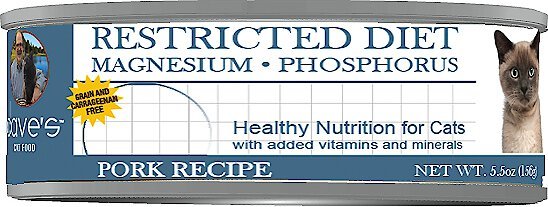Iams PROACTIVE HEALTH Adult Urinary Tract Healthy Dry Cat Food with Chicken Cat Kibble, 22 lb. Bag
IAMS knows that each cat is different. That’s why our range of recipes has been specifically tailored to your cat’s needs and life stages. Keep your cats at their best with IAMS PROACTIVE HEALTH Adult Urinary Tract Health Dry Cat Food with Chicken. Perfect for outdoor or indoor cats, this formula helps reduce the pH in cat urine to promote urinary tract health. Chicken is the #1 ingredient in this protein-rich cat kibble formula. Plus, it includes vitamin E to maintain a healthy feline immune system, as well as essential nutrients, like calcium and potassium, for a healthy heart. The kibble has an optimal omega-6 and -3 fatty acid ratio for a soft, shiny coat, and the crunchy texture helps reduce plaque buildup. So, if you’re looking for a dry food for urinary tract health, get your paws on this… and keep your feline happy, healthy, and ready to pounce with IAMS.
IAMS knows that each cat is different. That’s why our range of recipes has been specifically tailored to your cat’s needs and life stages. Keep your cats at their best with IAMS PROACTIVE HEALTH Adult Urinary Tract Health Dry Cat Food with Chicken. Perfect for outdoor or indoor cats, this formula helps reduce the pH in cat urine to promote urinary tract health. Chicken is the #1 ingredient in this protein-rich cat kibble formula. Plus, it includes vitamin E to maintain a healthy feline immune system, as well as essential nutrients, like calcium and potassium, for a healthy heart. The kibble has an optimal omega-6 and -3 fatty acid ratio for a soft, shiny coat, and the crunchy texture helps reduce plaque buildup. So, if you’re looking for a dry food for urinary tract health, get your paws on this… and keep your feline happy, healthy, and ready to pounce with IAMS.
- Contains one (1) 22 lb. bag of IAMS PROACTIVE HEALTH Adult Urinary Tract Health Dry Cat Food with Chicken
- Chicken is the 1st ingredient in this high-quality protein dry cat food to help support strong muscles
- Formulated to reduce urinary pH and promote the health of the urinary system for a happy and healthy cat
- Helps maintain a strong immune system with vitamin E
- Made in the USA with the Worlds Finest Ingredients
- Helps maintain soft, shiny coats with optimal omega-6 and -3 fatty acid ratio
- Helps promote heart health with essential nutrients including calcium and potassium
Additional information
| Country of Origin | Made in USA |
|---|---|
| Flavor | Chicken |
| Indoor/Outdoor | Indoor |
| Life Stage | Adult |
| Primary Flavor | Chicken |
| Packaged Height | 3.93 in. |
| Packaged Length | 24.5 in. |
| Packaged Width | 14.5 in. |
| Manufacturer Part Number | 10242370 |











by Anner
Having dealt with pretty significant health issues in one of my male tabbies previously, I am very cautious about food choices. My vet recommended that I always choose a urinary tract formula for preventative measures. Initially, I bought a very expensive variety through my vet’s office. But ultimately, for financial reasons, I settled on Iams as a middle ground. My cats love it, and so far it has kept everyone healthy. I would suggest this food for anyone who has dealt with medical issues in their animals.
by Andy
Great Price for a great product
by Frank
The associate was Mega Kind to deliver the food along with some extra freebies.
by Scherye
I’ve been feeding this to my feral colony, at least 15 cats are eating here daily, plus neighbor’s cats who prefer this to what they get at home. It is a reasonably priced food and I think keeping these cats as healthy as possible is better for the entire neighborhood. They love this food.